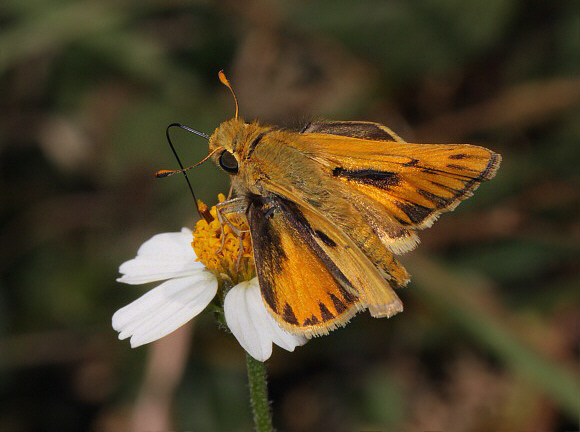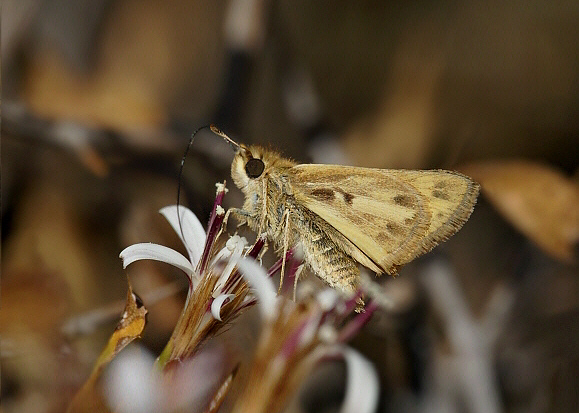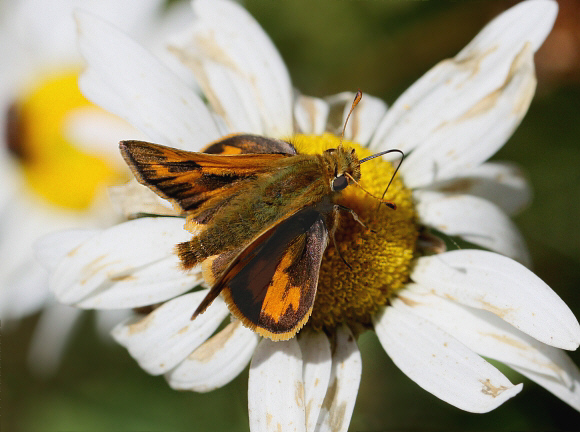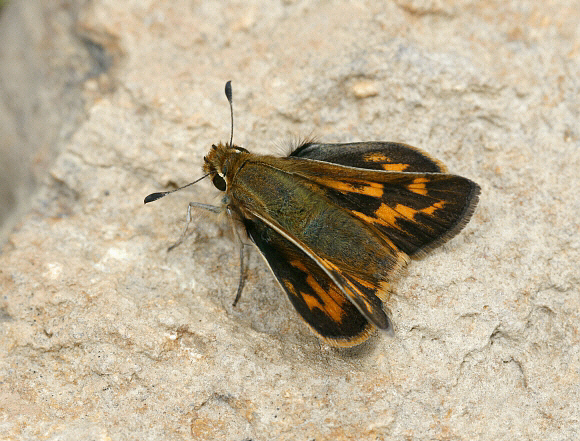
Introduction
The genus Hylephila contains 21 species, all confined to the neotropical region, with the exception of H. phyleus which is found as far north as Canada.
Hylephila are characterised by having golden orange or pale yellowish uppersides, with jagged dark borders, and a dark streak in the discal area of the forewings. In all species females are duller and more heavily marked. The undersides of both sexes are yellowish or straw-coloured, with brown or black spots that vary in size and shape from one species to another.
Hylephila phyleus is one of the commonest and most widespread butterflies in the Americas. It can be found from Canada to Bolivia, Argentina and Chile. There are 6 currently recognised subspecies. The ground colour of males varies from a deep lustrous golden-orange to pale golden yellow, and the dark markings vary considerably in extent according to subspecies and locality. It often flies in the same locations as other Hylephila species e.g. at Shismay and Cusco in Peru subspecies andina flies in company with Hylephila peruana.

Habitats
Hylephila phyleus is a cosmopolitan species found in all kinds of grassy habitats at altitudes between sea level and at least 3000m. It probably has a wider altitudinal range than any other butterfly, with the possible exception of Vanessa cardui.

Lifecycle
The eggs are pale greenish-white, and laid singly on the underside of leaves of the foodplants. The larval foodplants are grasses including Canna, Axonopus, Cenchrus, Eriochloa, Stenotrphum, Poa, Digitaria, Panicum, Saccharum, Paspalum, Eragrostis, Agrostis and Cynodon. The fully grown larva varies in colour from yellowish brown to drab green, and is marked with dark longitudinal stripes along the back and sides. It lives within a nest made by binding grass blades together with strands of silk. The chrysalis varies in colour from pale green to yellowish brown, mottled dorsally with dark brown. It has a dark longitudinal line along each side, and another along the back.
Adult behaviour
The adults are usually encountered in colonies of at least a dozen, and often share their breeding habitats with other Hylephila species.
Both sexes bask on rocks or among grasses, with the wings held in the characteristic Hesperiine position – hindwings outspread, and forewings held up at 45 degrees. In hot conditions at midday they close their wings to regulate their body temperatures.
Both sexes visit a variety of flower species for nectar, including Senecio.

